In July 1944, staff photographer Frank Scherschel from Life Magazine was on assignment in Europe. He was in France covering the Battle of Normandy with the US Army and during the battle of St-Lô was able to get airborne in an L-Bird to get some aerial pictures.
Reproduced here, they can be found with millions of others in the Life Magazine Archives http://images.google.com/hosted/life – I found them via Facebook and have asked Life for permission to reproduce with no reply…so this post could disappear at any time – get ’em while they’re hot!
History does not recall whether Frank flew in a Cub like ours (L4), or one of the other types. Here is a typical field location with an L4 taking off and a Stinson L5 parked. The 46 code on our aircraft represents the 79th Infantry Division. The 44 on the L5 signifies the 30th “Old Hickory” Infantry Division, which “spearheaded the St-Lô breakthrough of Operation Cobra” (according to Wikipedia!) – this was the start of the breakout from the Normandy beachhead, which up until this time had been about 80 miles wide and only about 25 miles deep.
Most L-Bird fields were just fields like this. Narrow and short, but they managed:
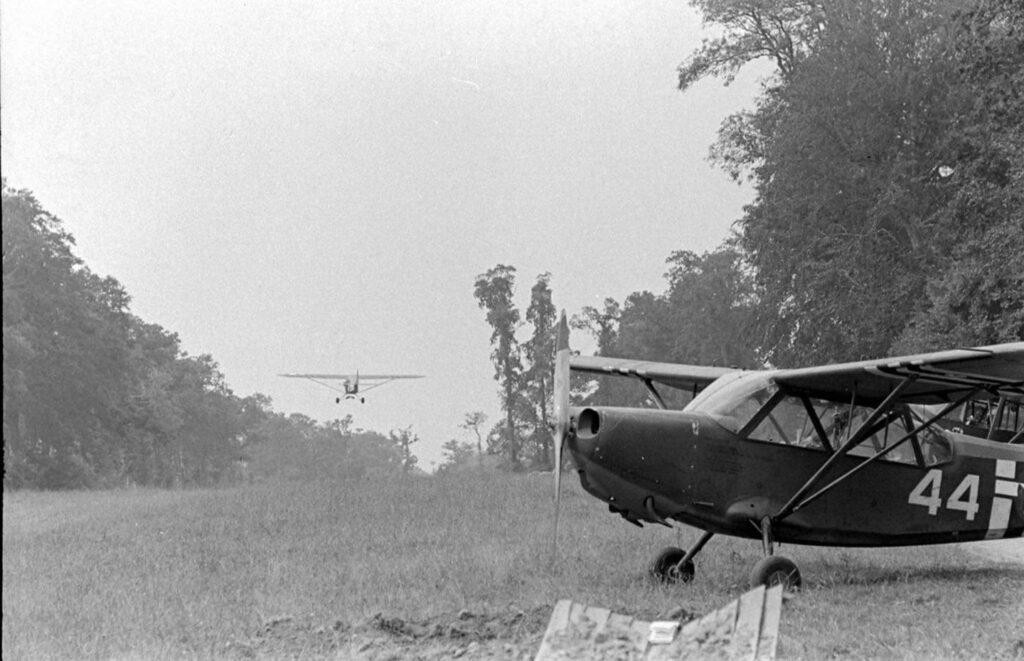
A typical view of US troops from above – M3 Halftrack, jeeps and a couple of motorbikes. This is La Perrine, between St-Jean de Daye and Pont Hébert, to the north of St-Lô:
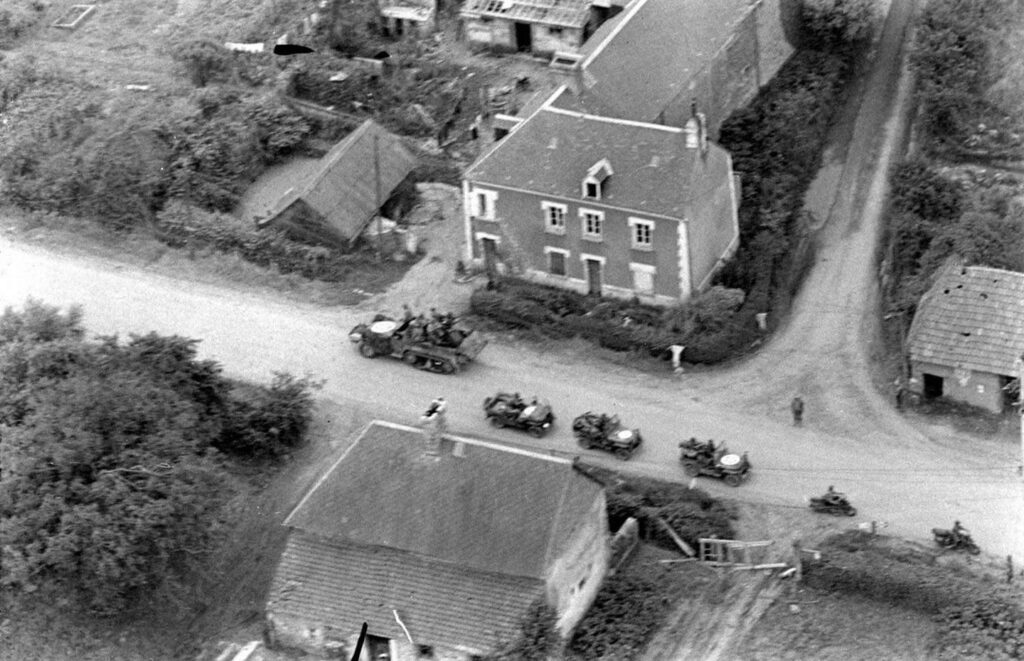
…and here’s the location today, courtesy of Google Earth. There have been some changes, but it’s still recognisable as the same place:
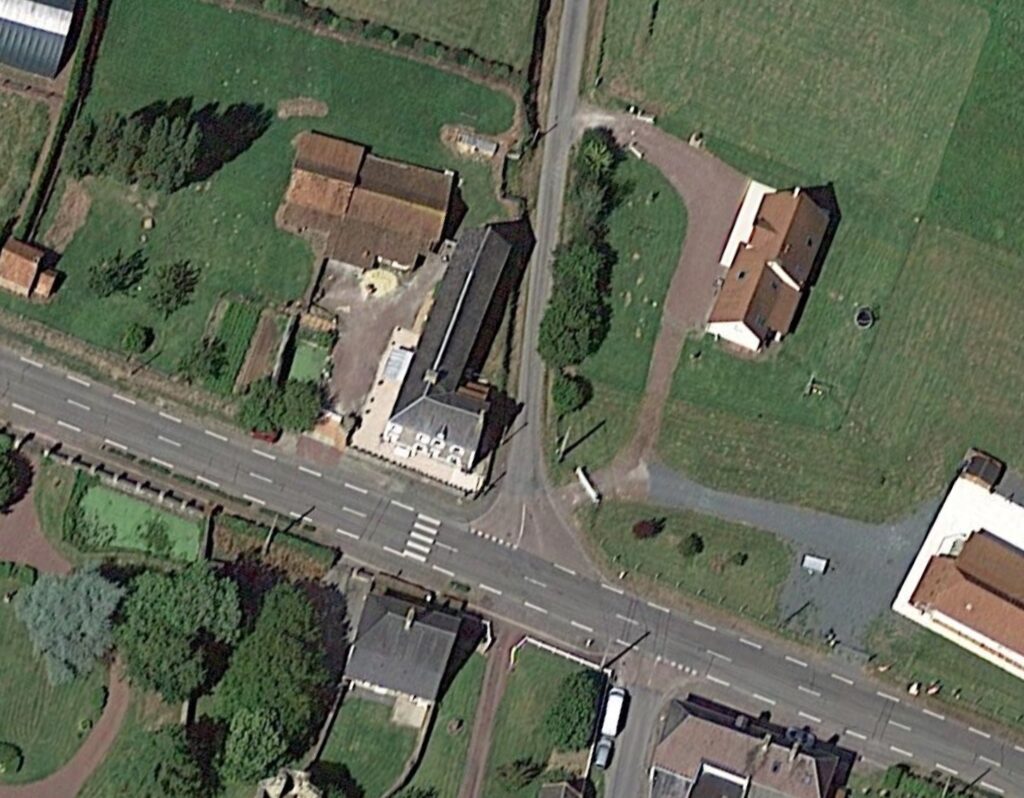
Another small hamlet with church, which didn’t fare so well:
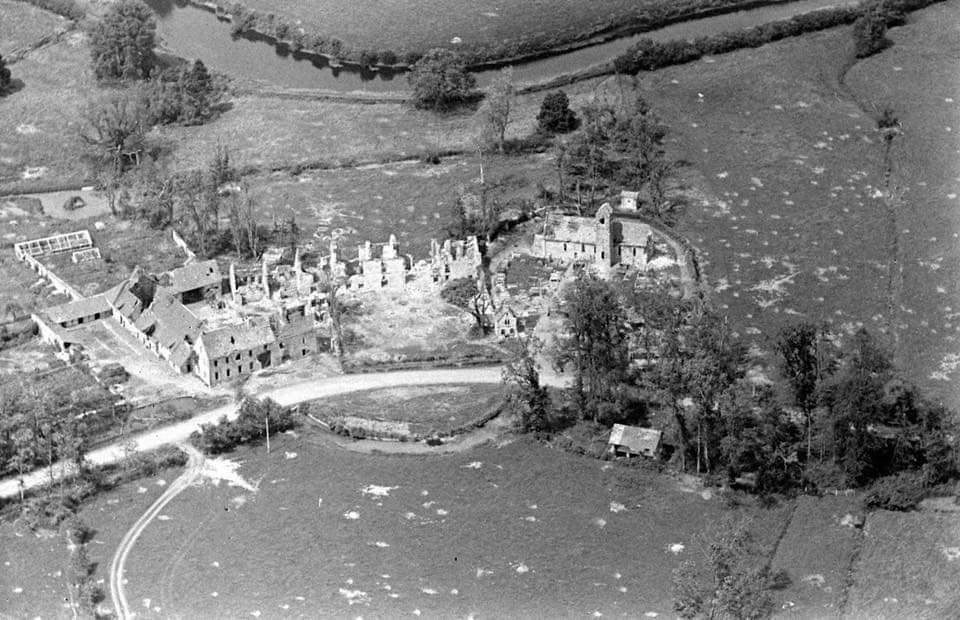
A ruined industrial building:
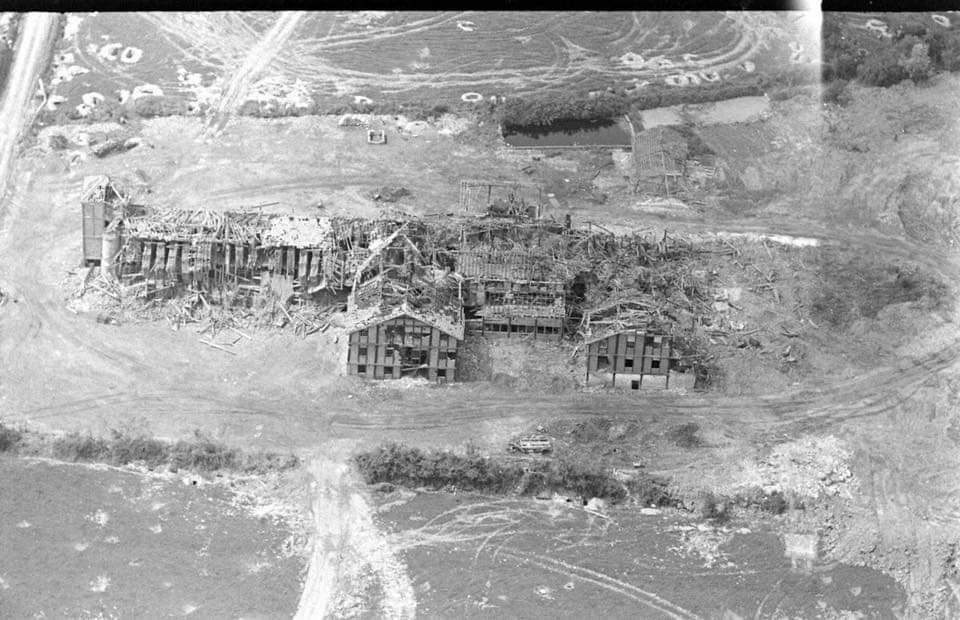
A Norman château which has seen some fighting, although some of the buildings seem intact:
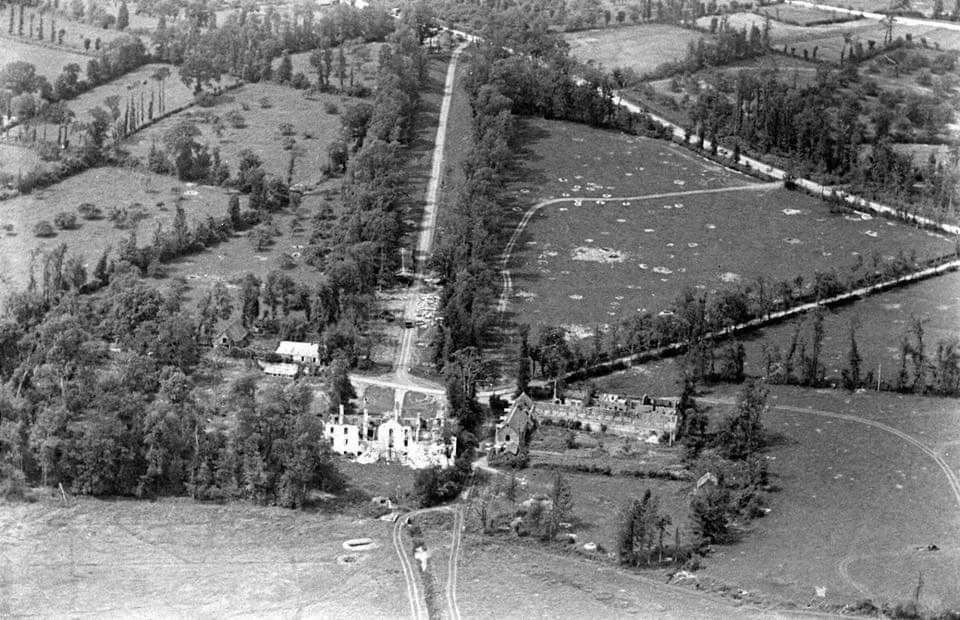
Another which wasn’t as lucky:
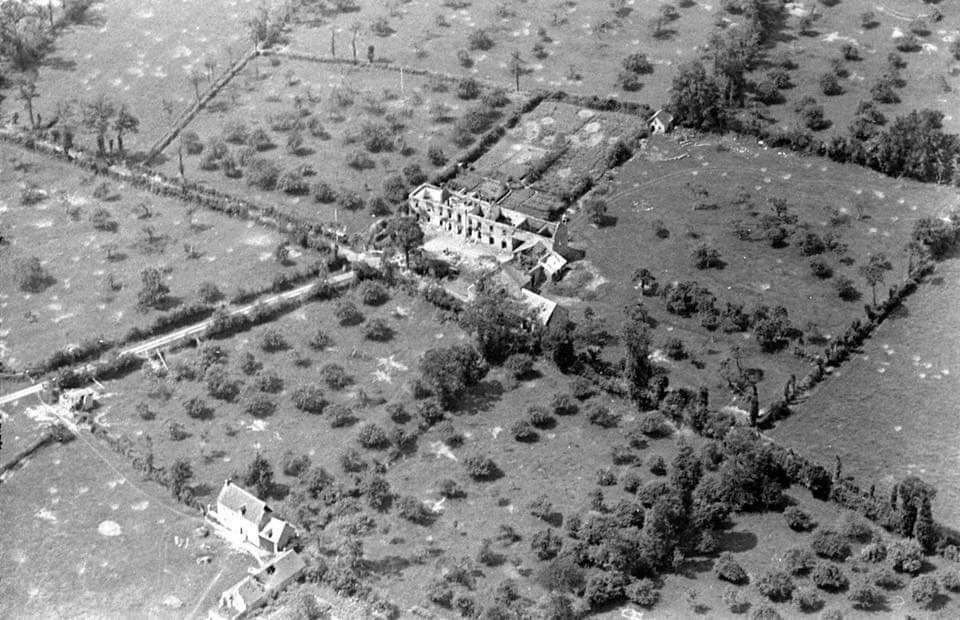
Typical bocage countryside. Excellent defenders territory, but for the attackers, once they took one hedge, the next one was only 75 yards away. It was a slow and laborious process to make headway, and if adjacent units were slower to advance it left your flanks exposed. The Germans, being masters of the counter-attack, were quick to exploit any advantage, as many allied units found out to their cost:
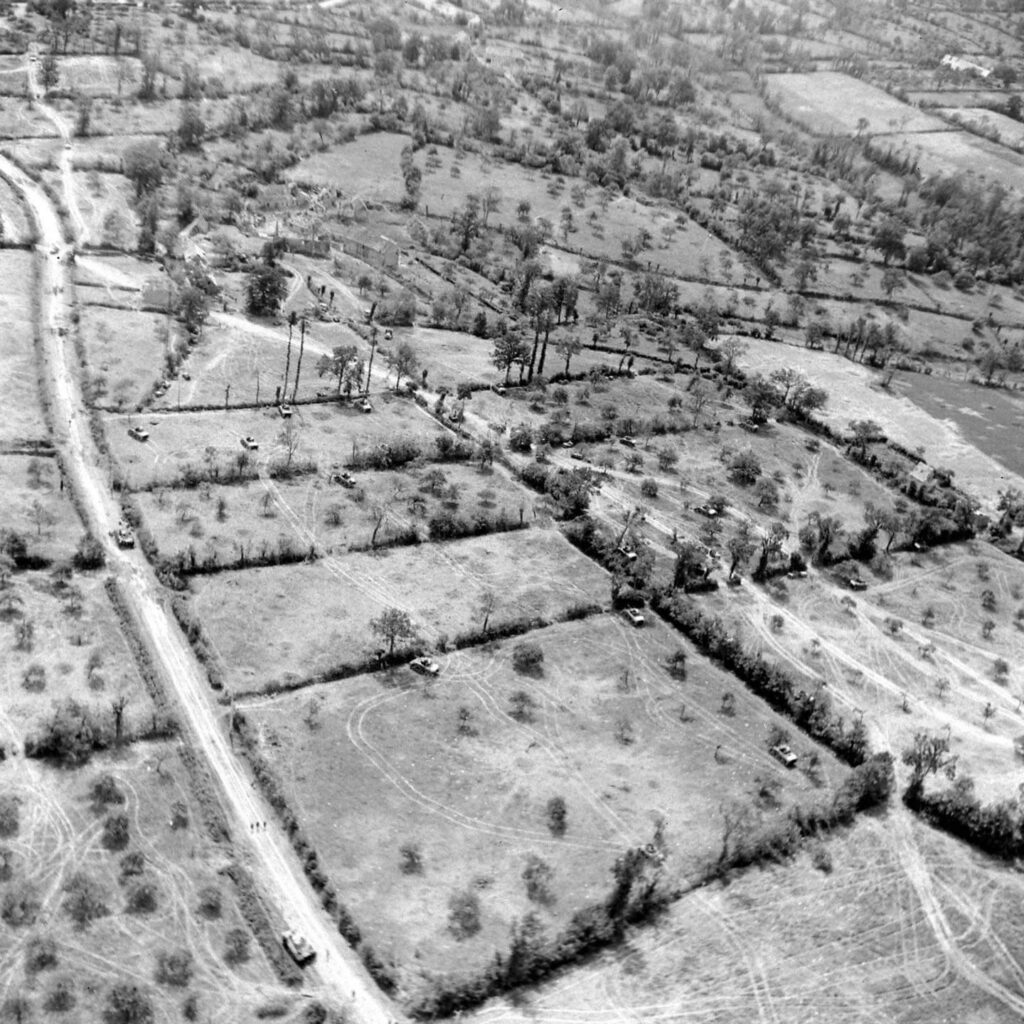
A supply convoy making its way forward through the fields:
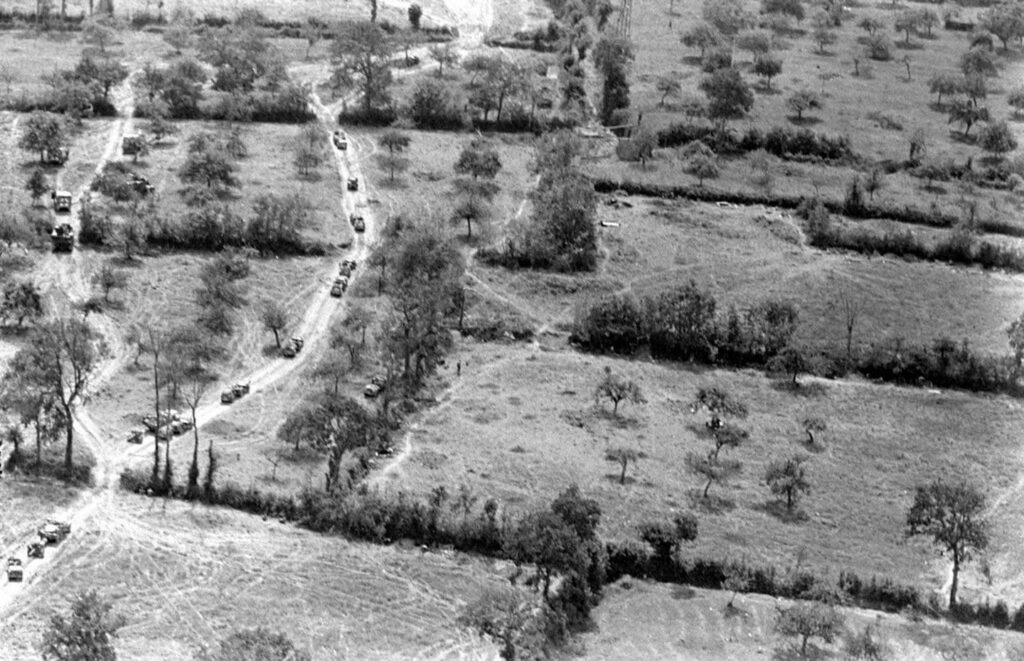
An armoured unit spread over several fields. From above it looks quite simple, but from ground level it could be a claustrophobic nightmare of small fields, tall hedges, sunken roads and confusion:
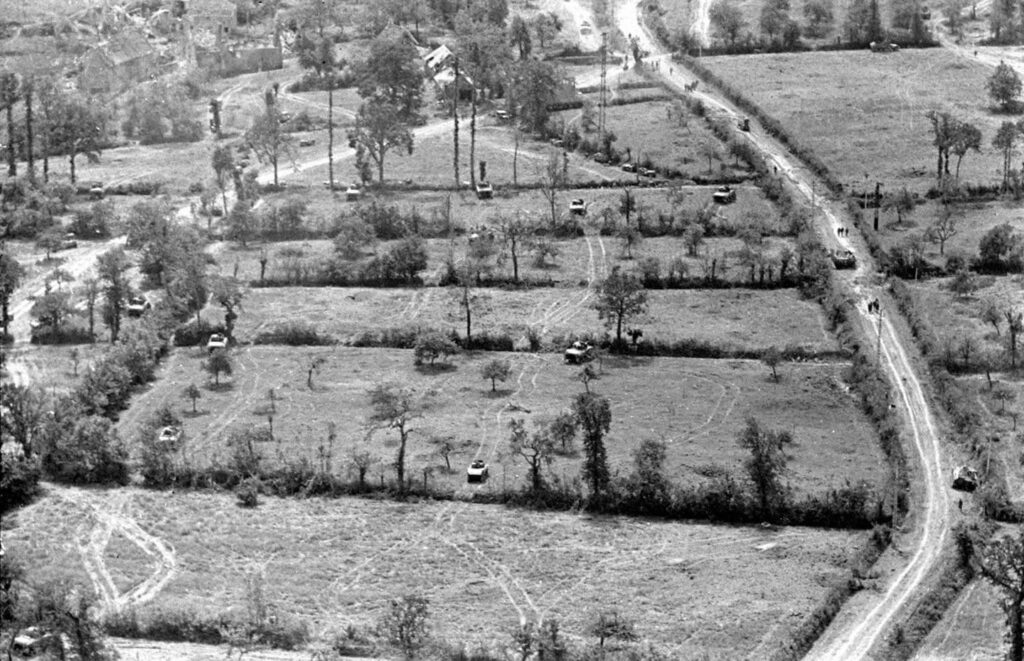
The aftermath of an artillery strike:
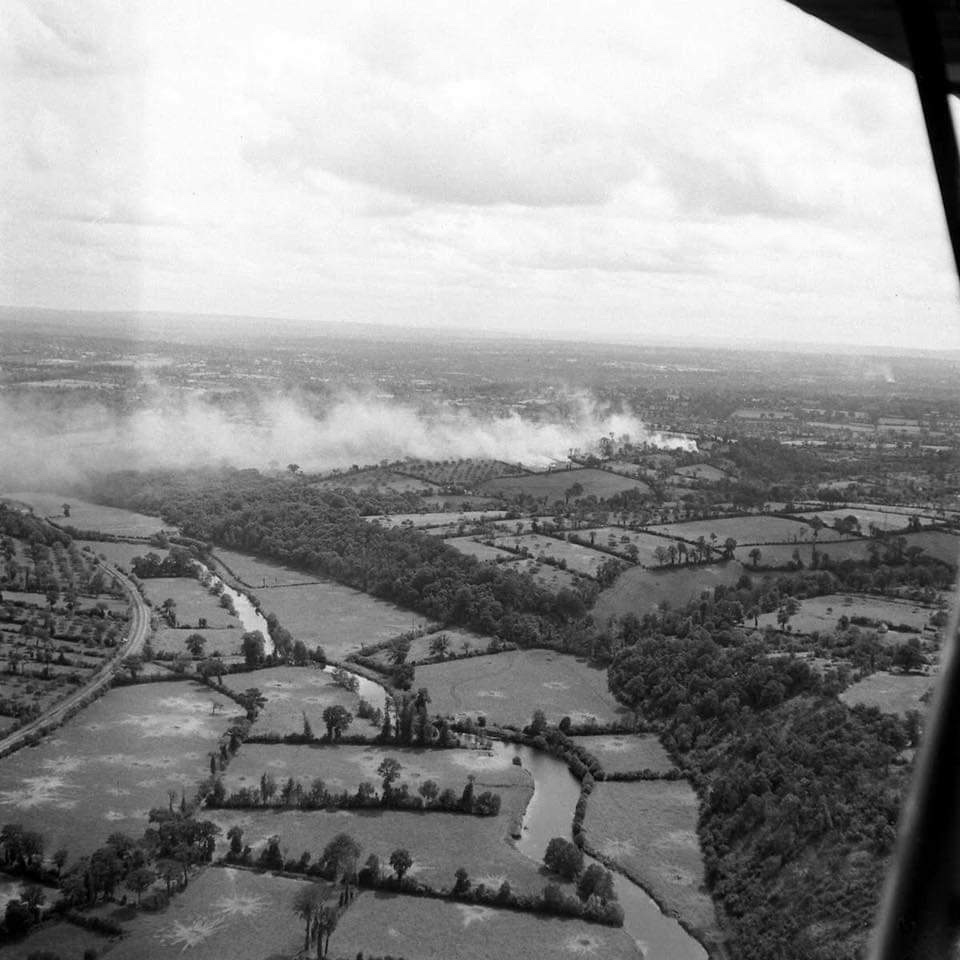
The enemy…knocked out and abandoned Tiger and Panther tanks, and what might be a StuG 111 assault gun, probably of the Panzer Lehr Division, and possibly near the village of Le Dézert after a failed counterattack on 10 July against the 9th and 30th Infantry Divisions. The boundaries between units are always weak points ripe for exploitation in an attack. In this case 30 of Panzer Lehr‘s tanks were knocked out by US M10 tank destroyers and the remainder withdrew over the Vire canal:
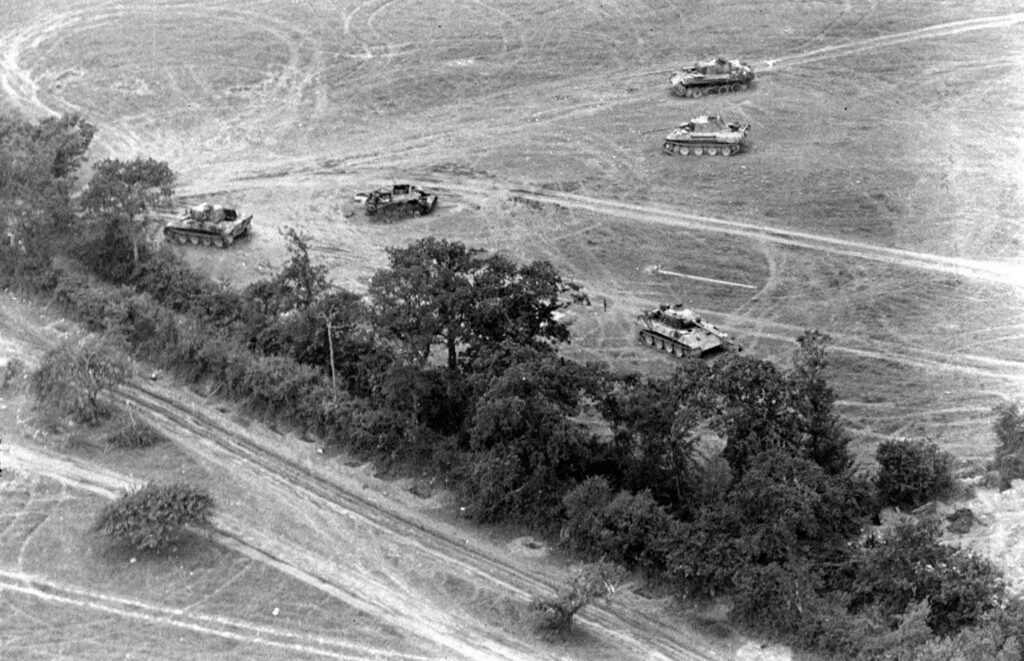
The same field from another angle. Note the other vehicles tucked into the hedgerows and sadly bottom right an innocent herd of cows killed in the action:
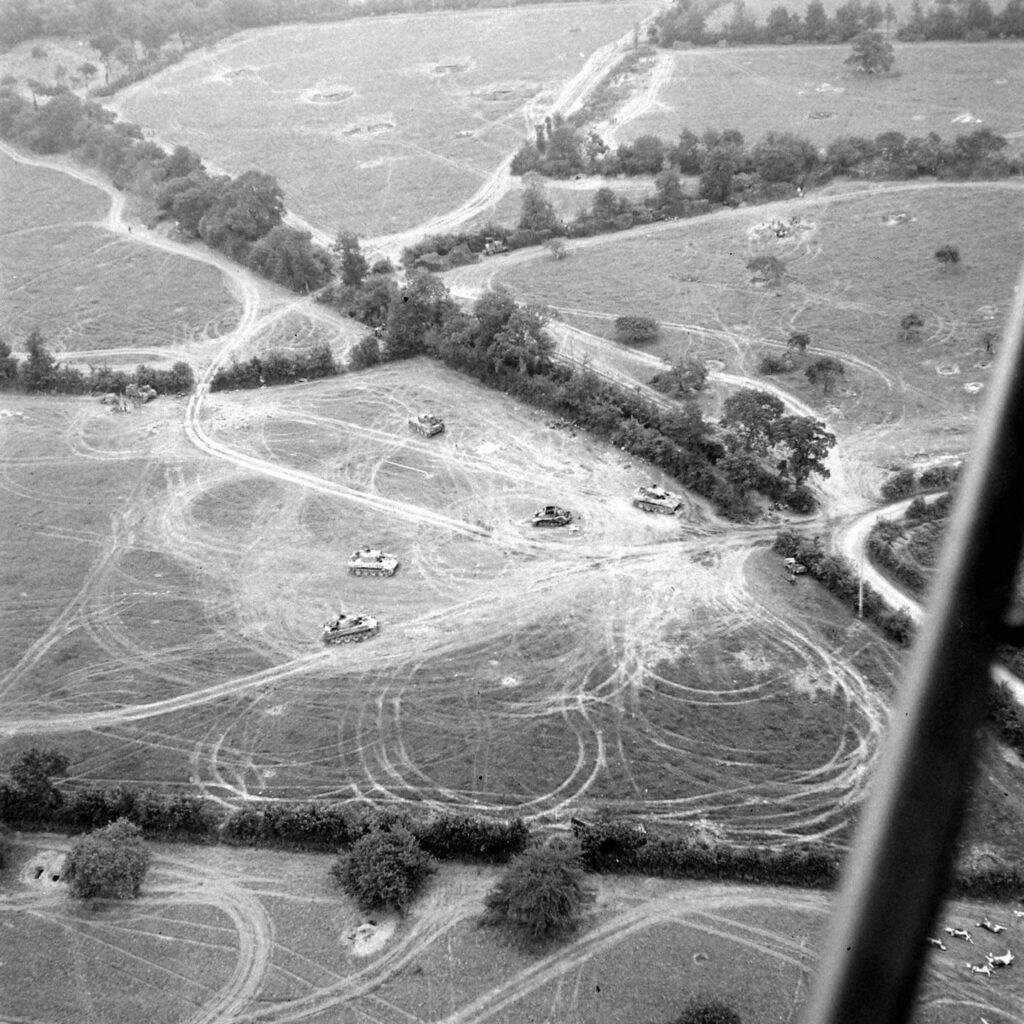
Excellent photographs showing why the Piper Cub and other L-Birds are such good photo platforms. It’s more peaceful today, but it is a privilege to own and fly a piece of history:
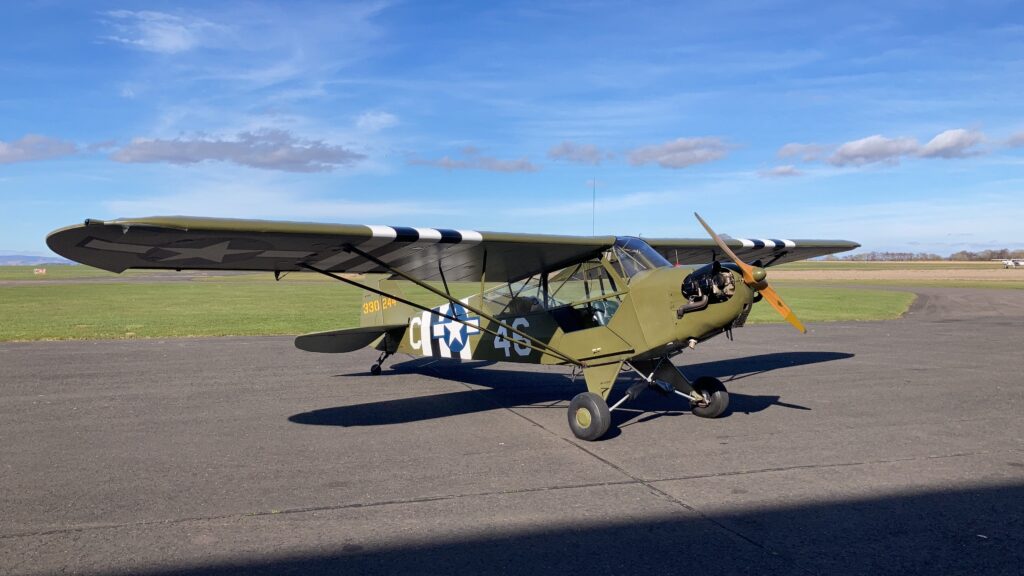
If you do get sucked into browsing the Life archives, don’t blame me…you may be in there a while!
